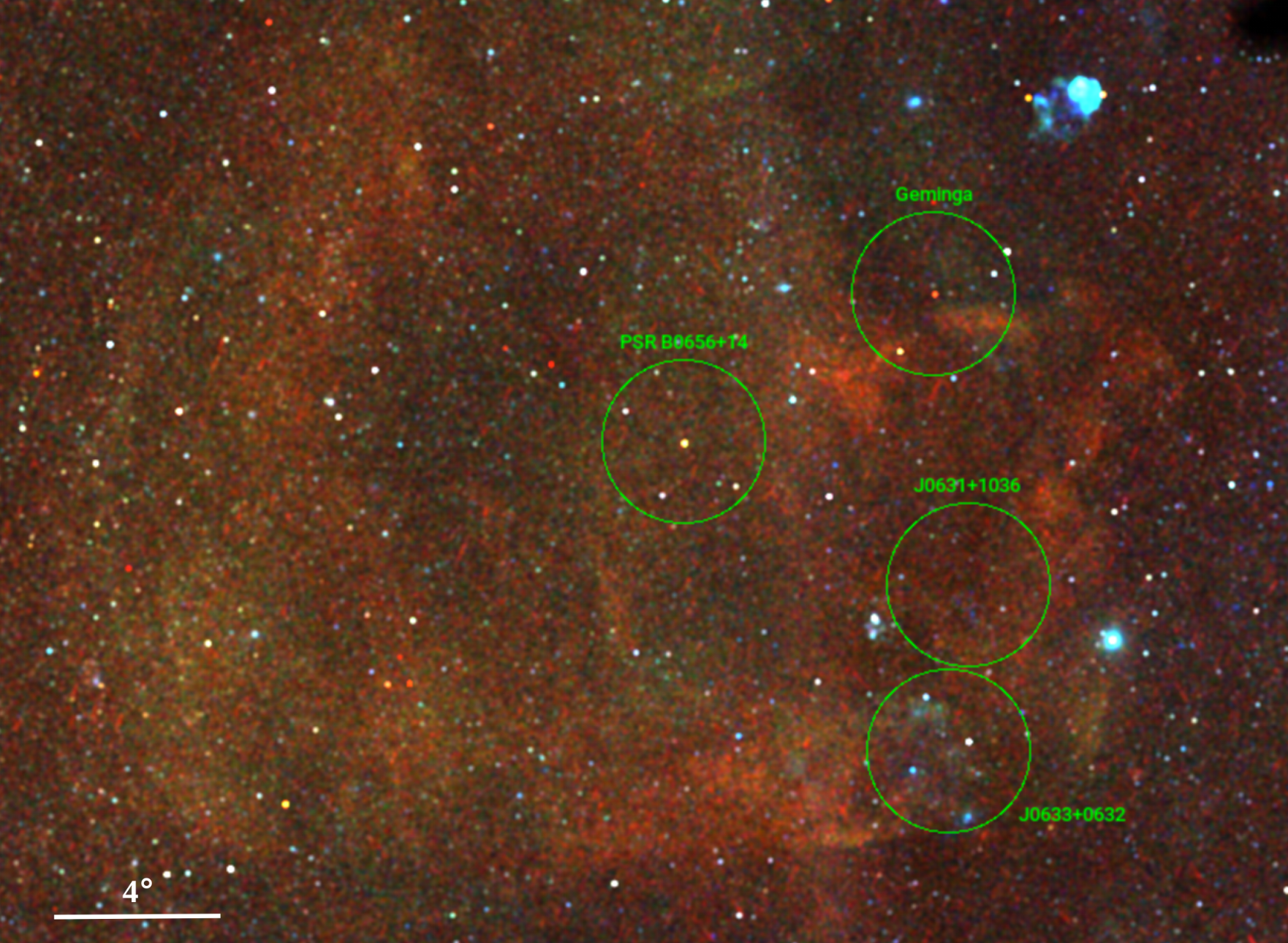X-Ray Counterparts of Degree Wide TeV Halos Pulsars - Notes on Khokhriakova et al. 2023
Link to paper: “Searching for X-Ray Counterparts of Degree Wide TeV Halos Around Middle-Aged Pulsars with SRG/eROSITA”
TeV Halos around Pulsars - also in X-rays?
Some middle-aged (50-500 kyr) pulsars have been found to have extended TeV emission, now called the TeV halo. One idea to explain this is that the pulsar wind nebula is about a degree wide, and the electrons that make up this nebula can then be up-scattered by photons from the cosmic microwave background via inverse Compton scattering. These up-scattered electrons can then produce further X-ray emission via synchrotron processes when interacting with the interstellar magnetic field, which has a strength of about 3 microGauss. This would imply that the TeV halo should be associated with a diffuse X-ray emission comparable to the TeV emission.
Telescopes
The paper lists a number of instruments that have been used for analysis:
- H.E.S.S. (High Energy Spectroscopic System) is an Imaging Atmospheric Cherenkov Telescope (IACT), which detects from about 100 GeV to tens of TeV.
- HAWC (High Altitude Water Cherenkov Observatory) is a Water Cherenkov detector array with FoV > 2sr, and detects photons energies of hundreds of GeV to hundreds of TeV.
- LHAASO (Large High Altitude Air Shower Observatory) consists of particle & muon detectors, a water Cherenkov detector, air Cherenkov telescopes, and an electron-neutron detector array.
- Chandra and XMM-Newton have too small a field of view and are therefore not ideal for detecting this emission.
- eROSITA, on the other hand, is an ideal instrument because it does sky surveys, 0.2-10 keV, FoV 0.81 deg^2.
- Fun fact: the eROSITA data are shared between the German and Russian consortia, and the data at galactic longitude < 180 deg belong to the Russian consortium only!
Selected Objects
They selected five pulsars to study using eROSITA data. Four of them are within the Monogem Ring, a supernova remnant about 20 degrees wide, and the fifth pulsar is close to the Crab pulsar, which is very bright. They argue that even in these circumstances there’s still science to be extracted, even if it’s only at the upper limits. They chose these pulsars because of their high energy flux at Earth, their age, their magnetic field and the presence of a TeV counterpart. Only middle-aged pulsars (between 50 and 500 kyr) are chosen, because younger pulsars are unlikely to have the halo-like emission, since the electrons accelerated by the pulsar wind nebula are injected into the interstellar medium only a few tens of thousands of years after the pulsar’s birth. The diffuse X-ray emission of older pulsars is expected to be too faint to be detected. The Crab pulsar would tick all the boxes, but it is too bright to analyse. The eROSITA data used for this analysis are reduced using all standard tools and pipelines. The energy range is 0.2-8.0 keV.
X-ray halo?
Both visual inspection of the eROSITA images and quantitative analysis revealed no significant extended X-ray emission around the pulsars in the 0.2-8 keV energy range. No background variability was detected either. However, they go on to estimate the flux of the degree-wide emission. To do this, they calculated the maximum count rate of the 3 sigma level and simulated the observation using a power-law spectrum with photon index 2. Based on this result, they went on to calculate the upper limit of the magnetic field strength based on a model they don’t explicitly explain. The results are then compared with model calculations and found to agree for three pulsars and disagree for two. Only in the conclusions do they point out and discuss that the TeV emission may not even be associated with the pulsars, and they show how the positions and uncertainties agree for only one pulsar.
Questions/Comments
- So TeV emission is related to pulsar position just for 1 pulsar? I suppose I would have to dig into the original papers to find out why they think they are linked in the other cases.
- The term “1 degree” seems a bit arbitrary, as it should depend significantly on the distance, shouldn’t it?
- At first I was confused why they chose so many circles for the background regions and not just one annulus covering that part, but I suppose it makes sense for the observation covering the Crab pulsar, as it makes it easy to exclude certain regions.
